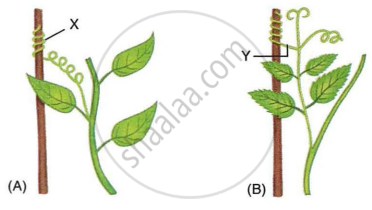Advertisements
Advertisements
Question
What does a root do in response to light? What is this phenomenon known as?
Solution
Root always grows downwards and away from light. This phenomenon is known as negative phototropism.
APPEARS IN
RELATED QUESTIONS
How is the movement of leaves of the sensitive plant different from the movement of a shoot towards light?
What is the stimulus in geotropism?
Plant parts show two types of movements, one dependent on growth and other independent of growth Give one example which depends on growth
Name the part of plant which shows positive geotropism. Why?
The stimulus in the process of thigmotropism is:
While conducting experiments to study the effects of various stimuli on the plants, it was observed that the roots of plant X grow and bend towards two stimuli A and B but bend away from a third stimulus C. The stem of the plant X however bends ” away from stimulus A and B but bends towards the stimulus C. The stimulus B is known to act on the roots due to factors related to Earth. Keeping these points in mind, answer the following questions:
- What could be stimulus A?
- Name the stimulus seen in B.
- What could be stimulus-C?
Name the phenomenon occurring in plants which are under the control of gravity, water and chemicals with one example each that shows the movement involved.
Which parts of a plant exhibit Negative geotropism?
______ of sweet peas exhibit thigmotropism.
Study the diagrams given below and answer the following questions:

- Name the structures shown as X and Y in the figures (A) and (B), respectively.
- Write the functions performed by the structures X and Y.
- Name the phenomenon depicted and define it.
- How do the structures X and Y differ from each other?
- Give examples of the plants which show the said phenomenon.
